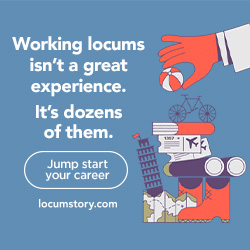<iframe style="width:120px;height:240px;" marginwidth="0" marginheight="0" scrolling="no" frameborder="0" src="//ws-na.amazon-adsystem.com/widgets/q?ServiceVersion=20070822&OneJS=1&Operation=GetAdHtml&MarketPlace=US&source=ss&ref=as_ss_li_til&ad_type=product_link&tracking_id=peaceinvesting-20&language=en_US&marketplace=amazon®ion=US&placement=0060555661&asins=0060555661&linkId=80f8e3b229e4b6fdde8abb238ddd5f6e&show_border=true&link_opens_in_new_window=true"></iframe>|<iframe style="width:120px;height:240px;" marginwidth="0" marginheight="0" scrolling="no" frameborder="0" src="//ws-na.amazon-adsystem.com/widgets/q?ServiceVersion=20070822&OneJS=1&Operation=GetAdHtml&MarketPlace=US&source=ss&ref=as_ss_li_til&ad_type=product_link&tracking_id=peaceinvesting-20&language=en_US&marketplace=amazon®ion=US&placement=1119404509&asins=1119404509&linkId=0beba130446bb217ea2d9cfdcf3b846b&show_border=true&link_opens_in_new_window=true"></iframe>|<iframe style="width:120px;height:240px;" marginwidth="0" marginheight="0" scrolling="no" frameborder="0" src="//ws-na.amazon-adsystem.com/widgets/q?ServiceVersion=20070822&OneJS=1&Operation=GetAdHtml&MarketPlace=US&source=ss&ref=as_ss_li_til&ad_type=product_link&tracking_id=peaceinvesting-20&language=en_US&marketplace=amazon®ion=US&placement=1119376629&asins=1119376629&linkId=2f1e6ff64e783437104d091faaedfec7&show_border=true&link_opens_in_new_window=true"></iframe>

By Dr. Anthony Ellis, WCI Columnist
I was fortunate to end my career on a high note as the chief medical officer for a community mental health center. My administrative role was primarily as medical director, but the pandemic accentuated the CMO role from March 2020 to July 2022, adapting to deliver services in “COVID World” while trying to protect the health of patients and staff. I cross-trained my successor and then stayed on as a part-time psychiatrist, treating over 100 of my prior patients whom I had known for up to seven years. My large office in Michigan with nice furniture and a view of the snowy parking lot became a desk in the basement just an arm's reach from the washer and dryer in the laundry room of our new mountain home 700 miles away. On the Zoom screen, it looks like a nice little office, and my new view of the Carolina mountains from our deck in between patients is spectacular.

While planning my version of FIRE, I saw a plethora of articles that suggested that retirement was like a death or a very challenging transition that one must plan adequately. Woe be to the white coat investor who retires “early” without preparing for this new role. The articles predicted that one would risk falling apart mentally due to the lack of a structured day. I read that I needed “something to retire to” or it could be a disaster. It was common knowledge that this was especially true for professionals who had “a lot of their identity tied up in being whatever they were.” To go from the apex of one’s career to “dude in the basement on a screen” was possibly unnavigable. I have seen patients who seemed to struggle with this as well as friends, but the opposite is true about as often with others saying, “I wish I’d made the leap earlier.” Not everyone struggles at the “Seinfeld apex” when they draw their series to a close.
My ‘Halfback Plan' into Retirement
I thought that dropping to half-time for two or three years at the age of 58 would cushion the transition and that “practicing retirement” would also help. After looking for a place for about a year, we bought the downsized retirement home in the mountains of North Carolina in 2016—six years before the 2022 transition to fewer workdays, lower wages, and less structure. We visited the house on the mountain, sometimes quarterly, and we were extremely comfortable with the area, the activities, and the natural amenities before the move. Looking back, the idea to retire to the mountains was born during our 2013 trek across the Peruvian Andes with a guide, a cook, and a mule team. We were celebrating our 20th wedding anniversary, and this trip set the standard for all our future treks. We enjoyed vacationing in the mountains, and so we decided to buy a house in the mountains.
Another part of the “halfback plan” was to help our adult children in college begin to establish themselves in North Carolina. This had been since 2012 when our oldest started college near Asheville. Later, in about 2018, we gave all the kids, our friends, and my boss a “four-year warning.” It is not always possible to fill the boss in on transitional plans. Administrators sometimes treat short-timers differently, but giving years of notice and having a reasonable boss mitigated this risk. This made the eventual transition much easier to accept and adapt to for all concerned.
What is a “halfback?” It is not only a football position. For folks who have moved away from their home state (for me, Florida to Michigan), a “halfback” is someone who moved closer to their home state but not all the way back. For us, this “halfback” position was related to avoiding cold Michigan winters, wanting a lower cost of living, and looking for abundant hiking opportunities. Like others, we felt the Carolinas were just what the doctor ordered, and this turned out to be correct. It is no surprise that the fastest-growing states are warm and have year-round outdoor activities. A few have no state tax.

Oddly, the pandemic years helped with the transition since the clinical staff at the community mental health center and in other fields had been working from home for at least a year from April 2020 forward. For our staff, this lasted for almost two years with a hybrid model developing eventually. We optimized delivering mental health services via an audio or video interface during these two years of being in a “state of emergency.” Psychiatry is well suited to telehealth work, and having the ability to continue to see my patients mitigated another impediment clinicians struggle with: “What will happen to my patients?” The fact that I found and fully cross-trained my replacement helped with: “What will happen to the clinic if I leave?”
The pandemic was horrible, but it did provide time to reflect on which parts of life and work were in line with one’s well-being and satisfaction and which areas were not. People in all fields looked at their vocational plans, and there were people who moved their retirement closer after these stressful years.
More information here:
A New Way of Doing Business (and Saving Tons of Money) in My Retirement
The Happiness Index: Mine Required My Own Version of Retirement
How Your Identity Is Tied to Retirement
When I ask fellow white coats why they are still working when they could retire, having reached “their number,” the answers are usually something like these:
- “I would not have enough purpose or meaning without my work. It makes me feel useful.”
- “I do not know what I would do with myself and would be bored.”
- “I’m working to save more money for my family (or adult children).”
- “I still enjoy my work very much.”
In the process of becoming a white coat, a decade or more of schooling may play a part in this difficulty with identity outside of one’s chosen field. We spend four years trying to excel in undergraduate science fields to get a ticket to a professional school for three or four more arduous years of study, followed by more years of specialization. It is no wonder that we have had less time to pursue and develop hobbies and interests. Add in the extra hours that come with taking night calls, working weekends and holidays, and participating in labor-intensive training in general, and you have a lot of yourself tied up in your clinical field of endeavor. There is also a constant push for productivity and a culture that focuses on putting in extra hours.
In one of my conversations with an administrator in 2011, the fellow asked: “Where did you get the idea that your job was 40 hours a week?” He then proposed a 60-hour work week and a productivity-based contract that would likely end up with a 10% cut in my pay for more work. Another psychiatrist and I refused to sign and quit. Sadly, my colleague was at his limit and had a heart attack at about that time. He recovered and went to work for another entity that gave him a more reasonable caseload and schedule.
More information here:
Are Physicians Who Retire Early Abusing the System That Made Them Rich?
Finding and Developing Your Hobbies Before You Retire

Is it possible to find meaning and purpose outside of clinical practice? Of course it is. We have white coats and all that comes with that, but we are also spouses, parents, siblings, friends, and volunteers. We develop hobbies and interests outside of seeing patients “when we have time.” One way to find out what you like to do is to take note of what you do on vacations. Certainly not work, I hope. When free from work, you would tend to do things you enjoy, right? Write a list of the things you enjoy the most and set aside time for those activities you see yourself pursuing when you retire.
I am fortunate to have many hobbies that I developed while working as a psychiatrist. We do not work as many hours as some of the other specialties. With my decade of running a geriatric psychiatry unit, I was more aware of the link between vascular health and dementia risk, and we have been active since the year 2000. I have been reading, writing, swimming for fitness since 2007, completing long-distance swim races since 2009, walking, hiking, running since our mid-30s, spending time with friends, and investing. Then, there are the more recent pursuits, like cooking with homegrown mushrooms, making hiking staffs, planning international vacations, traveling, learning new languages for our trips, visiting local vineyards, going to brewpubs and trying craft beer, and sometimes drumming on a Cajon.
I swam 5,000 meters across a chain of connected lakes at ages 50 and 55, and I'll do so again this summer at age 60 (check out this epic drone footage of what I'll be doing). When I was in my 40s and early 50s, I completed dozens of 5K, 10K, and 10-mile road races. I also completed a few dozen sprint triathlon races that usually had an 800-meter swim, a 20K bike, and a 5K run. These days, I swim and hike more and use bodyweight exercises and yoga to maintain fitness, balance, flexibility, and vigor.
I am rarely bored.
All these activities are part of my identity, and they keep me healthy . . . except for the brewpubs. I am also lucky to have an adventurous spouse who shares an interest in fitness, nutrition, yoga, hiking, and travel. When I decided to drop to two 10-hour days a week, I did not worry that I would fill my time and find meaning and purpose. My spouse agreed with the plan to downsize our home, cut our expenses, pursue avocation, continue to work on fitness, and spend more time with each other and our grown children.
Since my jump-off point, hiking has moved to the No. 1 spot on the “what to do today” list. With fewer work-related stressors, I was more present on our hiking excursions and took an interest in the mushrooms that I barely noticed previously. In the summer, there are up to 100 distinct species of mushrooms on our land and on the trails we frequent. I bought an app for identification and began to learn more about the field of mycology. I found a half dozen or more edible species here, but I decided I would grow mine at home to make sure they were safe to eat. I did not want to end up on the news. I have grown Shiitake, Blue and Yellow Oyster species, and Lion’s Mane from kits available via reputable online mushroom spore companies.
This new interest folded into another new hobby: cooking delicious food. My old repertoire expanded to include wonderful omelets with fresh spinach, cheeses, veggies, and home-grown mushrooms. I made dozens of new soups and added more salmon, shrimp, and scallops with healthy side dishes and colorful salads topped with homemade dressings. Now, when we go out to eat, we do not go back unless the chef can “out-chef” me. Most still can, but I am learning.
Here are the rough steps that I used to go from a chief medical officer to a mushroom-growing, hiking traveler who is now “just a half-time employed dude in the basement” who thinks he can cook:
- Figure out your “number,” create a plan, and set a soft date. Our plan covered about seven years.
- Discuss the plan and timing with all the stakeholders (your spouse, children, family, and boss, if applicable).
- Find your piece of heaven if you do not live in it now.
- Make time for, develop, and hone your hobbies and wellness routines.
- Downsize if you must. Not everyone will need or want to do this.
- Take advantage of a lower cost of living if you are going to move.
- Consider a gradual downshift if you think this would work better for you.
- Think about practicing a “downshift of work version” and spending time in your spot first.
For the group that has much of their identity tied to clinical practice, have few hobbies or interests outside of their field, and who love their work more than leisure . . . well, there is a retirement plan called, “I will never retire,” and one can always choose that path.
I am happy with how things have turned out and with my ongoing part-time work. There is no issue with meaning and purpose with fewer work days, and our self-care schedule is full. On my weekends working in an inpatient psychiatry unit, I see people in life crises. They come in hopeless and leave with hope. Just this morning in the car on my way back from the pool, I heard Billy Joel’s “Movin’ Out (Anthony's Song)” and then James Taylor’s “Carolina in My Mind.” It was awesome.
Do you have a plan heading into retirement? Have you developed hobbies, or is that something you need to work on as you progress in your career? How else are you non-financially preparing for retirement? Comment below!
The post How I Went from Chief Medical Officer to a Mushroom-Growing Hiker and the Family Chef in Retirement appeared first on The White Coat Investor - Investing & Personal Finance for Doctors.
||
----------------------------
By: Josh Katzowitz
Title: How I Went from Chief Medical Officer to a Mushroom-Growing Hiker and the Family Chef in Retirement
Sourced From: www.whitecoatinvestor.com/retirement-mushroom-growing-hiker-family-chef/
Published Date: Mon, 26 Feb 2024 07:30:19 +0000
Read More
.png) InvestingStocksToolsClubsVideosPrivacy PolicyTerms And Conditions
InvestingStocksToolsClubsVideosPrivacy PolicyTerms And Conditions
